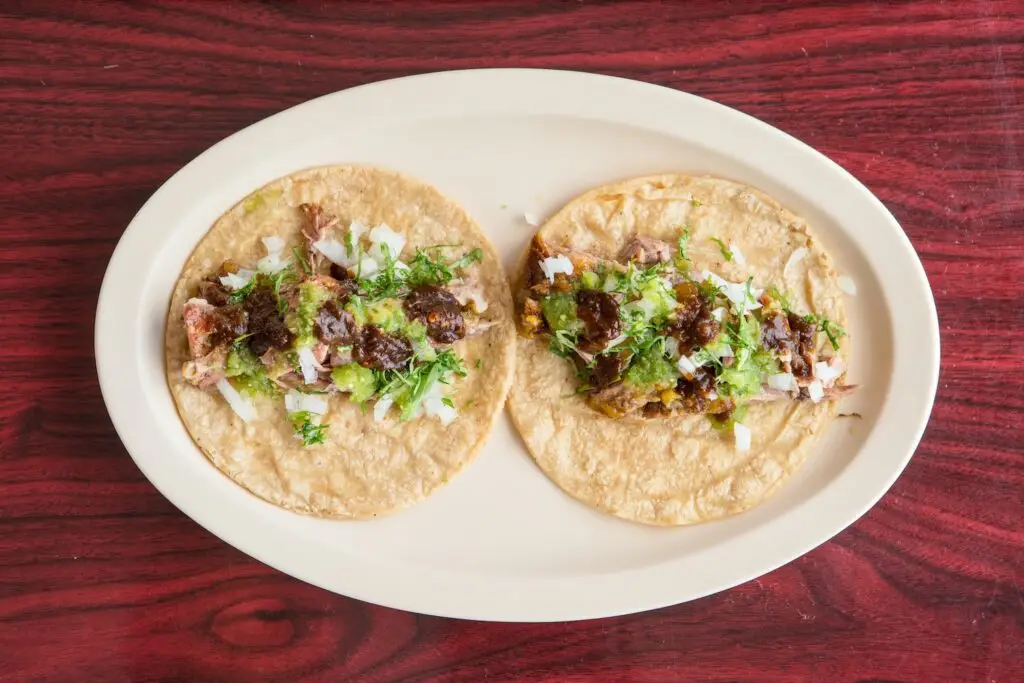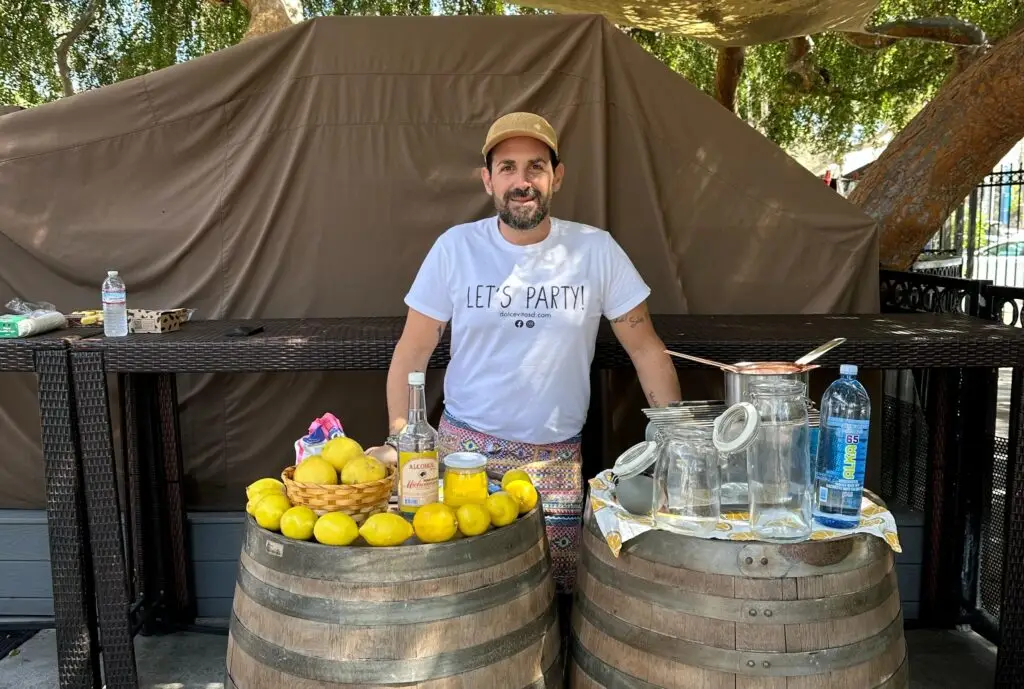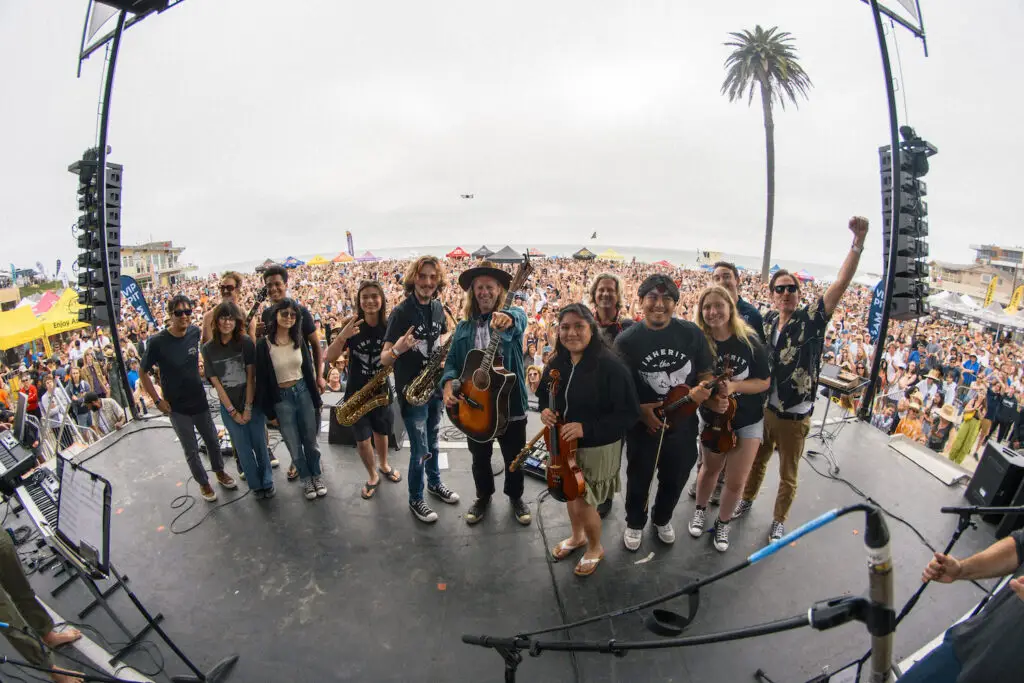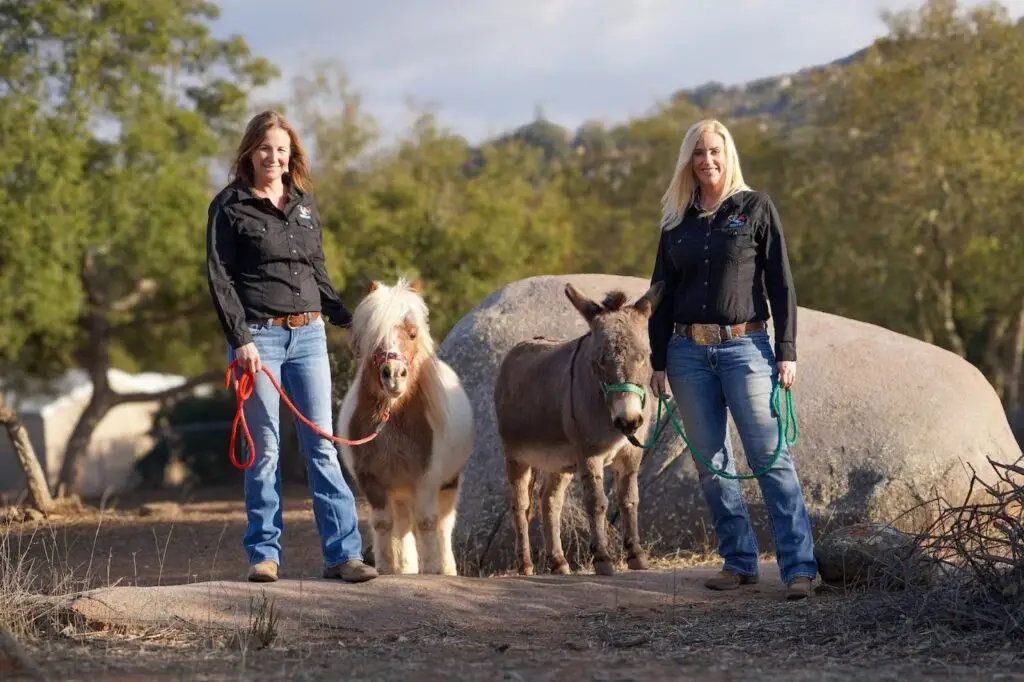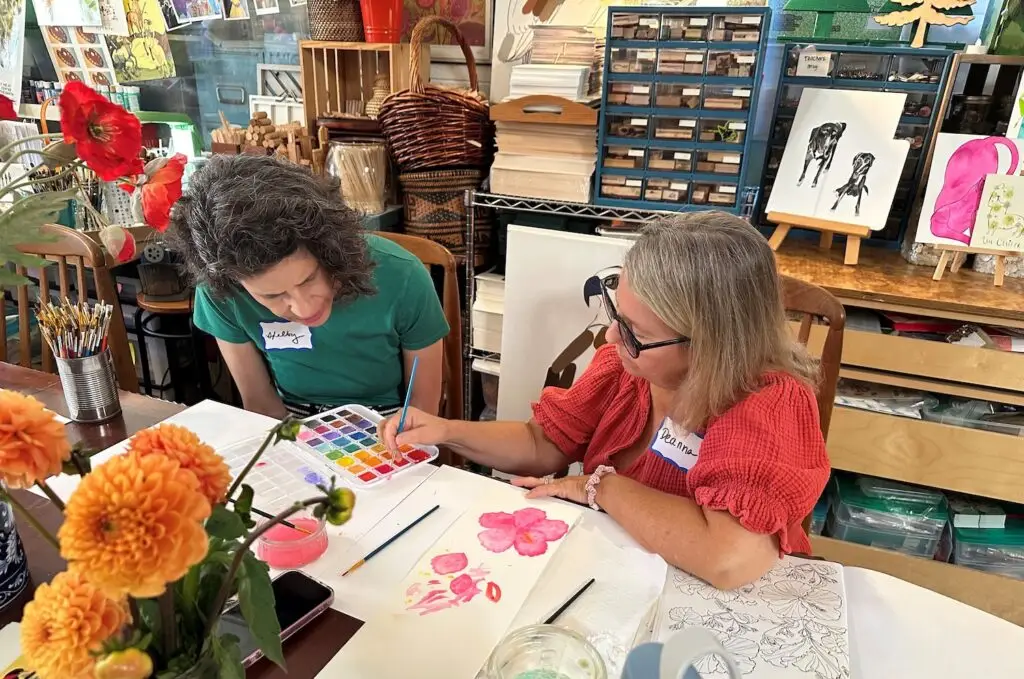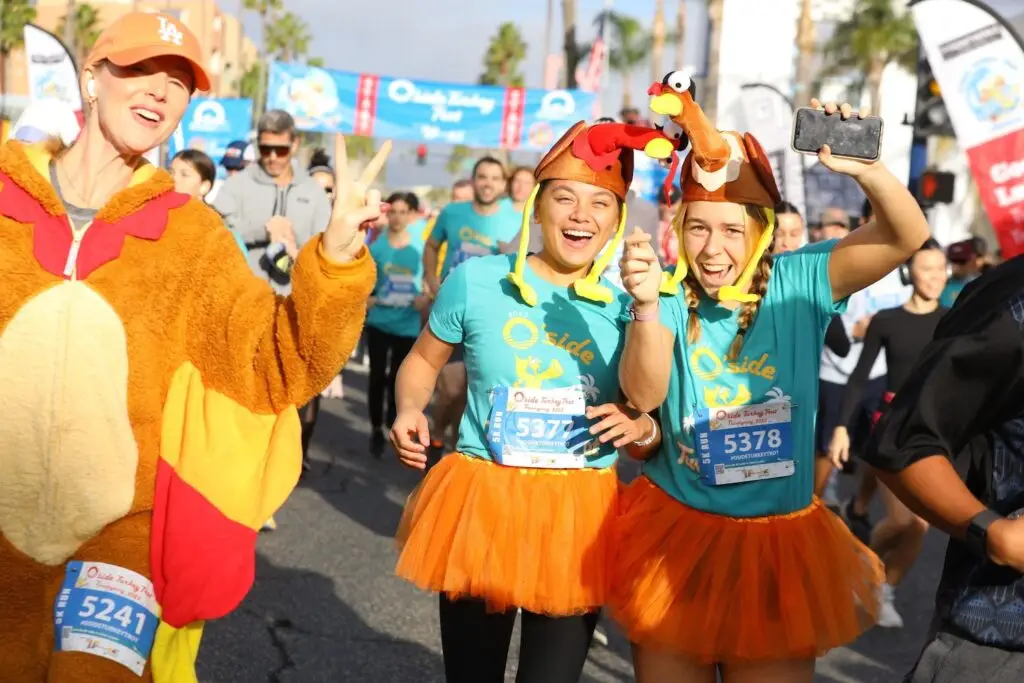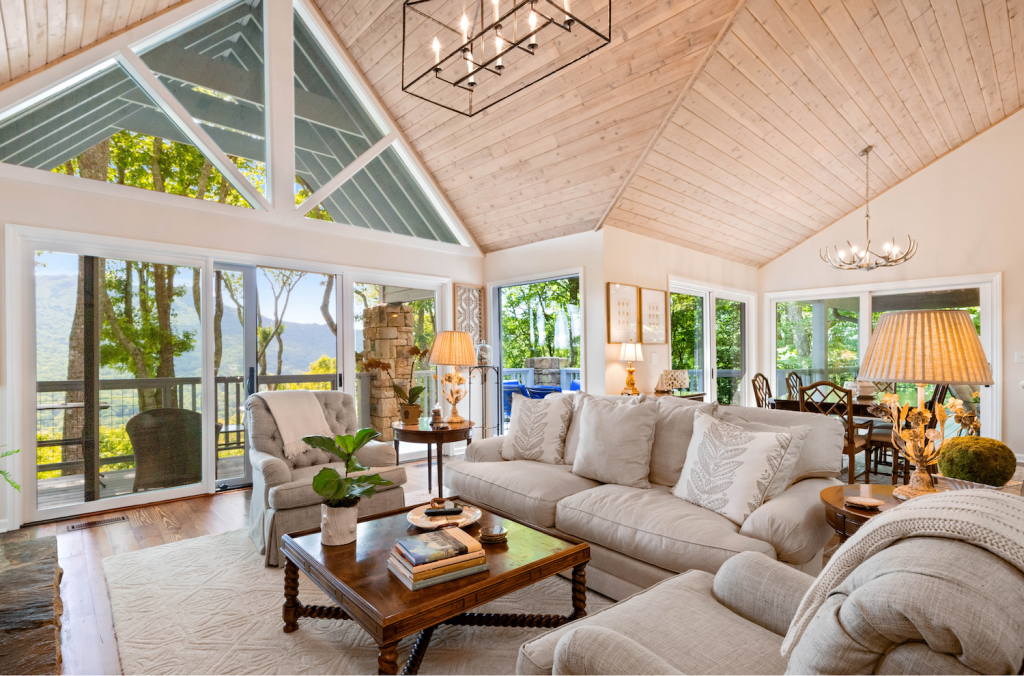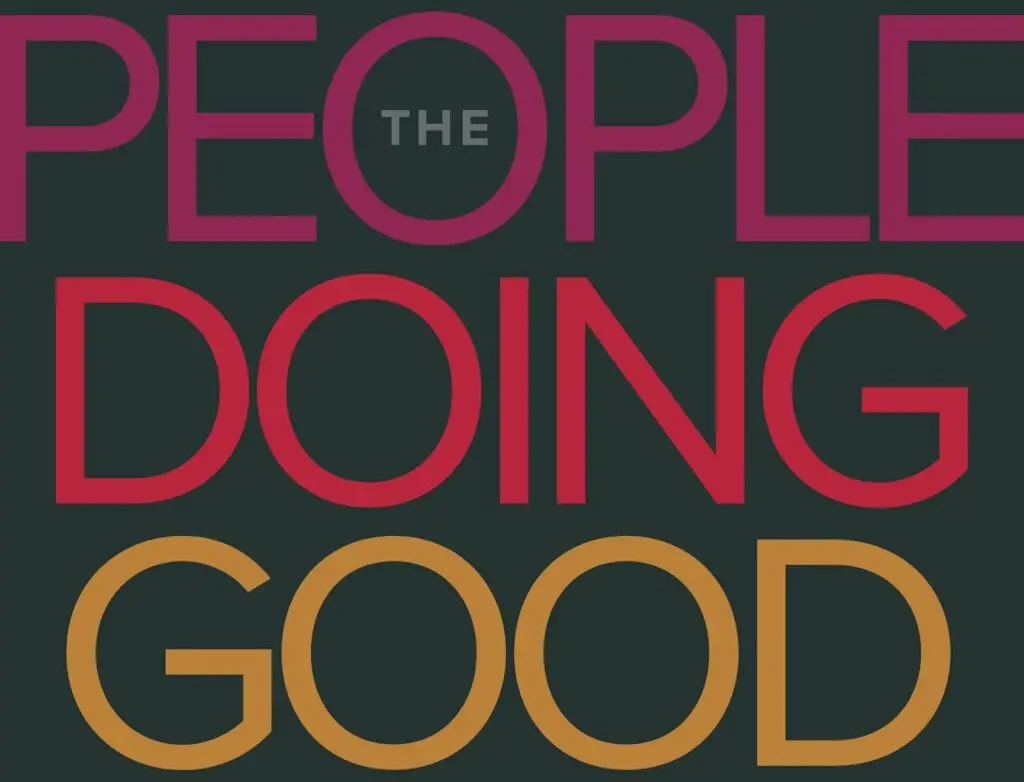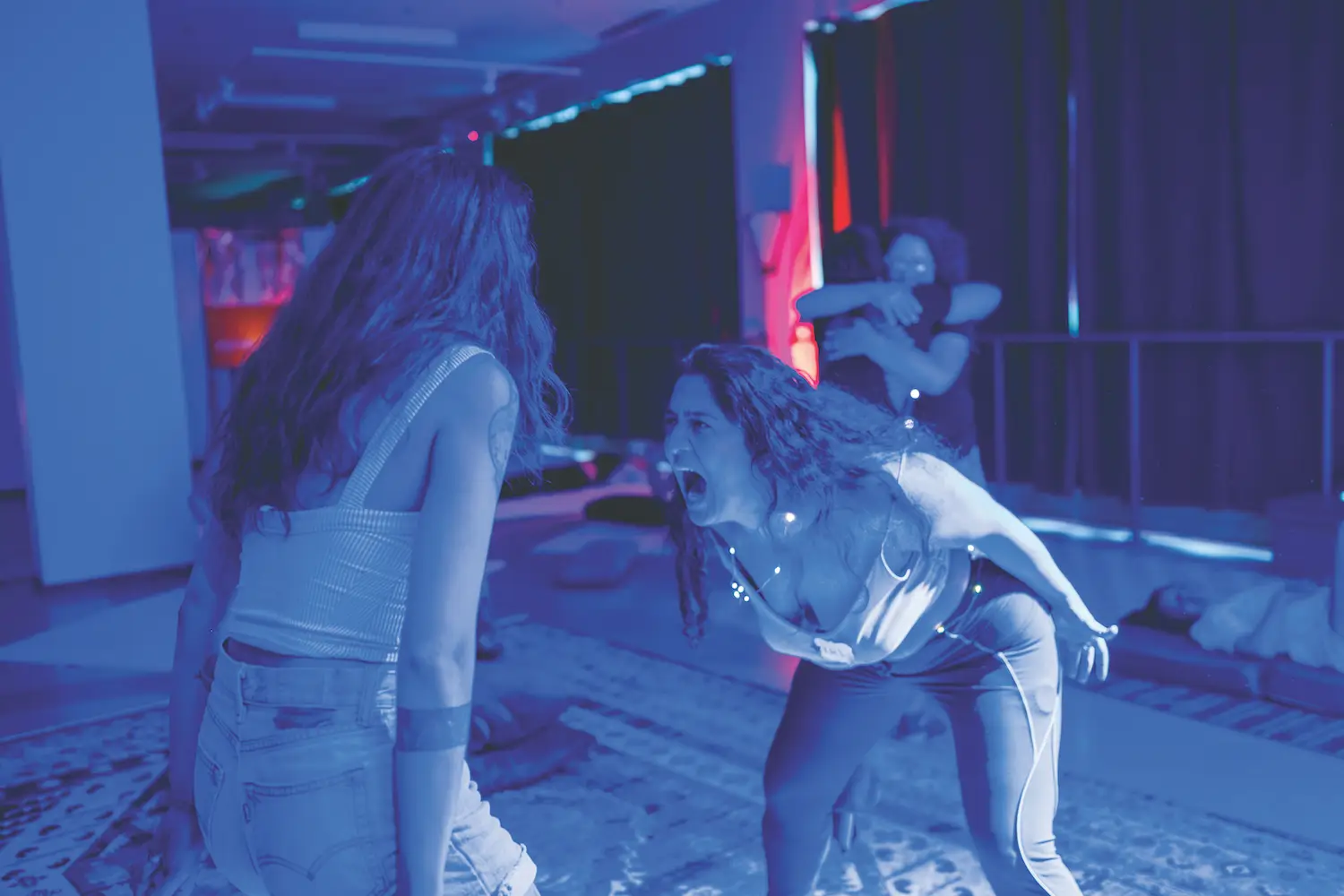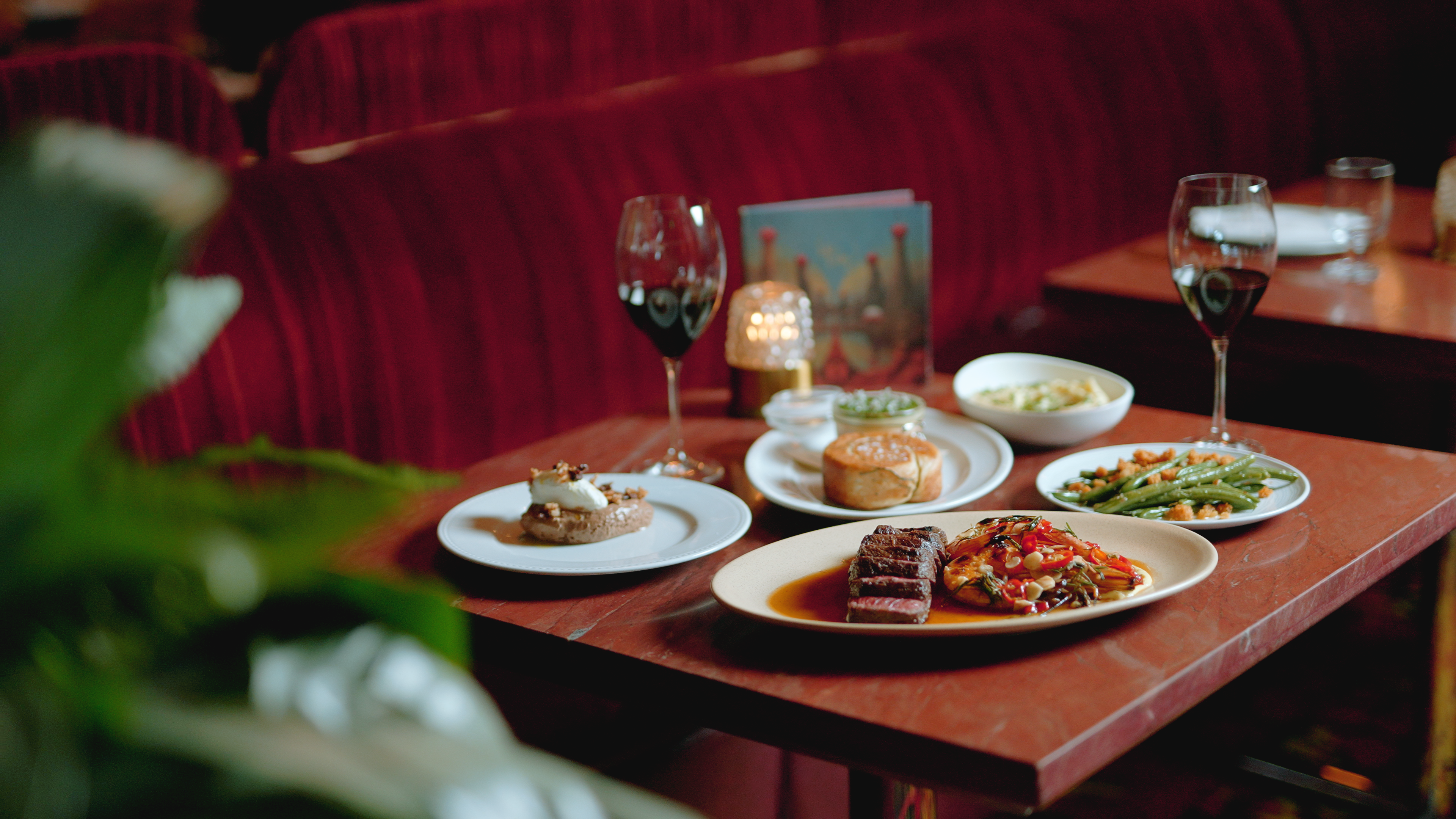I’m on all fours in a dark room, throat tight, body heaving, panting like an animal. My hair sticks to my sweat-soaked face, covering my eyes. All around me, like a scene from some ancient pagan ritual, women howl, curse, bawl, their bodies shaking in feral agitation. This is RAGEher, and we’re only halfway through the evening.
RAGEher is the brainchild of Kristina “Krissie” McMenamin, whose background in transformational leadership and somatic experiential coaching led her to navigate her own relationship with anger. She found few resources, especially for women to explore their rage, so she started hosting women-focused pop-up experiences as a way to help people express what can be an intimidating emotion in a healthy, collective way and channel it into joy, community, and relief. The event is modeled after a wild “girls’ night out”—the word “rager” is the loose basis for RAGEher.
People seeking spaces to vent anger seems to be an ever-increasing phenomenon. “Rage rooms” where participants can safely smash plates or old electronics with shameless abandon are a growing trend. And advertisements for men’s retreats in the woods—part fight club, part campfire Kumbaya— populate many an algorithm.
Are we becoming an angrier society? Or is anger a healthy emotion we’re finally learning how to confront and integrate into our daily lives? A combination of both? Recent personal experiences and the constant churn of the global news cycle left me grappling with how to handle anger in my own life with few tools in my toolbox, particularly since, as a woman, I grew up being taught not to express it publicly. RAGEher looked like a beacon to explore this forbidden flame.
Tonight’s session takes place at Gold Meditation and Wellness Center in Encinitas. The evening is divided into three stages. Part one is dubbed “Tempest Tavern.” It’s the nervous “entering the bar” stage of not knowing who might be there or how the night might progress. When I arrive, I’m asked to leave my given name at the door and choose a “rageling” name, a moniker intended to help me embody the spirit of my anger or the state I’m trying to manifest through this experience.
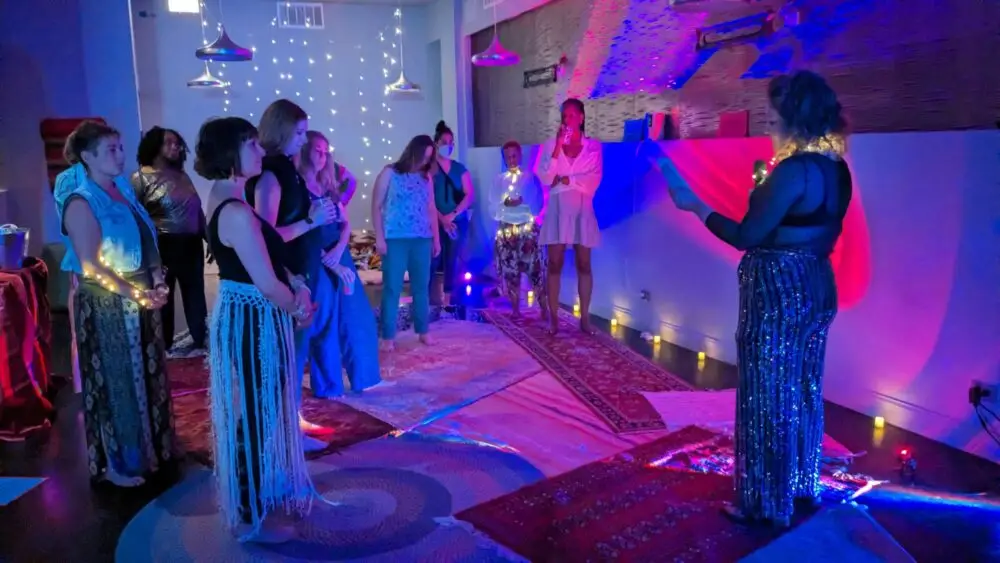
Rage doulas teach participants how to scream from their bellies—or offer full body embraces to those in need.
The names other participants choose are telling and honest—some political; some visceral, alluding to flesh and bone, female anatomy, or totems of personal strength. I am first in line, panic, and choose something bird of prey–related. Next, I’m invited to write the first word that comes to mind when I think of anger on a large easel-bound white board. The board quickly fills up, words like “hurt,” “fear,” “power,” “release,” “violence,” “f**k” (multiple times), and “destruction” scrawled in red.
I’m drawn from the main reception area at Gold down several steps into the meditation room. It’s a dark bunker of a space, sparse except for the expected mats, pillows, yoga bolsters, and… rubber baseball bats? I take note of them and find a place on the floor. I’m handed two questions on strips of paper, and, soon, I’m surrounded by fellow ragelings, maybe 20 in all. We break into small groups and awkwardly introduce ourselves, diving straight into questions we may have never been asked: “What are you allowed to be angry about? In what situations or with what people do you stop yourself from showing anger?”
Many of the participants have come to tonight’s session with a sense that their anger is unwelcome within their family networks, that they have taken up people-pleasing as a means of self-protection. One rageling says she has made herself small or silent to avoid disrupting the status-quo. Another confesses that her willingness to express anger has damaged her relationships—it’s seen as “too much” in her community.
I hear of childhood trauma, abusive partnerships, the feeling of powerlessness over climate change or the war in Gaza. I feel pain, heaviness, resentment, and regret in their stories. But I also see a hopefulness, the desire to grow and explore, a deep need to connect with other women, the longing for space to feel held and accepted. I realize how much we seem to have in common despite our range of ages and backgrounds, and my initial nervousness fades.
After 15 minutes, we’re called into one big circle in the center of the room. One by one, we introduce ourselves to the greater group using our rageling names, and we each share an intention for the evening. We also meet our “rage doulas,” several experienced coaches and therapists who are there to help guide us through the RAGEher journey and facilitate the safety and wellbeing of everyone involved. This might mean helping de-escalate feelings of overwhelm, redirecting the impulse to be self-destructive, or even simply offering a full-body embrace if the situation calls for it. McMenamin explains that RAGEher is not only intended to support better mental health—it may improve our physical health, as well.
There’s plenty of research to back her up. In her book Rage Becomes Her, author Soraya Chemaly points to several studies that support the claim that “a whole spectrum of health issues is now clearly linked to how people feel and express anger, which directly affects our hormonal system, immunity against disease, heart function, muscles, and skeleton.” Dr. Alice Domar, associate professor at Harvard Medical School and author of the book Conquering Infertility, has found that unmanaged stress is a major trigger for infertility and can worsen symptoms like PMS and polycystic ovary syndrome. Dr. Karen A. Matthews, distinguished professor emerita of psychiatry and professor emerita of psychology and epidemiology at the University of Pittsburgh, has conducted studies linking poor anger management to higher rates of cardiovascular disease in women.
McMenamin invites us to “look at our anger as a signal, as a boundary being crossed” instead of ignoring it or pushing it down. “It’s incredible data,” she says. She calls what we’re doing here tonight “sacred anger,” tapping into the belief that “women’s anger is not a problem to fix—but a power to reclaim.”
This marks the beginning of part two, “Fury Floor,” the manic, rabid, dance-party portion of the evening. Together, we stand and recite a poem, and I feel the intensity of the room rise, our voices booming in one harmonious thunderclap.
The lights go out. The purple glow of black lights and a few rage doulas wrapped in twinkling strands keep my eyes from total disorientation. McMenamin starts the stereo with a throbbing electro-dance track. She moves her hips slowly and instructs us to ground into the floor. To keep our knees bent and feel ourselves supported by our own balance. Then, she begins to growl—a low rumble from her belly that grows and lifts from her small frame like a jet engine. I look tentatively around the room. Ragelings are swaying, humming, some with their eyes closed, furtively testing their own audacity. McMenamin lets out a primal scream, and the room goes berserk.
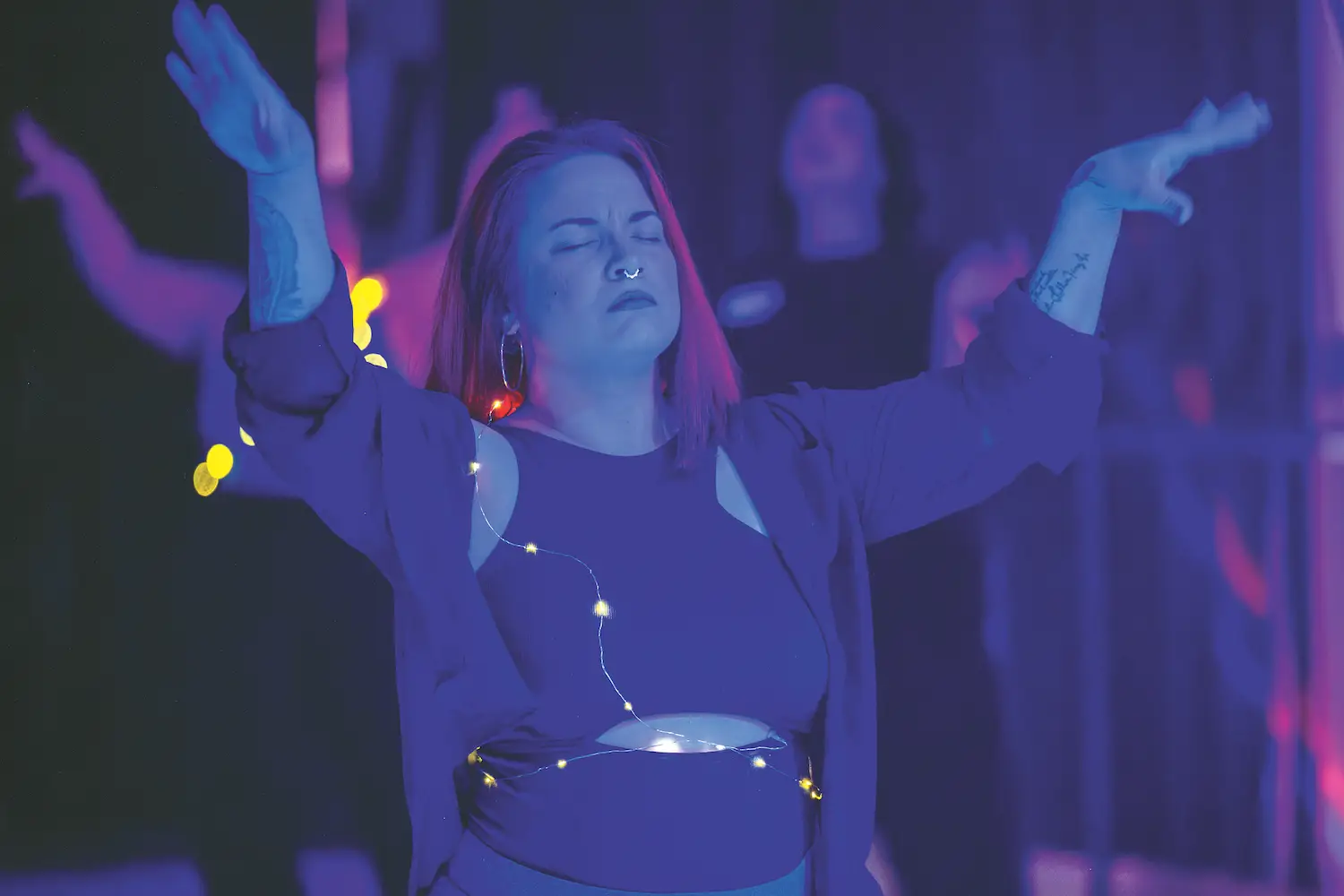
RAGEher is part group therapy, part somatic experience, incorporating music and dance to mimic a “girls’ night out,” only with fewer cocktails and more screaming.
I’m surrounded by thrashing bodies, women screaming at the top of their lungs, hurling expletives and taking up the bats on the floor, beating stuffed bolsters with pure physical bloodlust. The energy is electric and infectious. My hesitation goes out the window, and I’m screaming as hard as I can. This moment marks the meat of what RAGEHer is all about: to shake off the self-doubt, the polite society veneer, and behave in a way you can’t anywhere else.
It’s a shocking sensation, but the anonymity of being lost in a crowd of writhing beings undergoing their own transformations is riveting. I hear some women break into uncontrollable sobbing, others throwing literal tantrums on the floor. Even as I let my physical reluctance go, I find it difficult to access authentic anger in that moment. That seeing-red fury doesn’t appear for me. Instead, I feel a more physical tension; my thoughts stand in my brain more as a list of facts than deep emotion.
I start beating a pillow, but I pause, and McMenamin comes over to me. “Don’t give up,” she says. “I’m noticing you’re starting, but then you’re giving up. That’s your life force; don’t give up on it.” I begin screaming from as low in my belly as I can access, punching my pillow with all the ferocity I can muster. I hit it again and again and again until my body is aching and I’m a sweaty heap on the floor.
This goes on for perhaps 20 minutes, the momentum building and softening in waves as we feed off each other’s rhythm. Eventually, the room is at a low hum, most people completely exhausted. We retreat to corners and sides of the room, breathing heavily. Some are still crying, some holding themselves with a knowing and gentle rock. I’m spent, but I feel a wave of joy crash over me. It’s both the ridiculousness of what I just did and the euphoria of having left nothing on the table. I feel like I fought for myself and expressed as much fury as I could. I’m light, almost giddy. The music changes, lyrics singing of defiant self-love, and we all dance. Like ancient people around a campfire, we delight in each other and the impact of our ritual.
Afterward, we break into small groups once again for part three, “Livid Lounge.” We reflect on the experience over grapes and popcorn, like ending the night at a 24-hour diner after partying on the dance floor. We’re asked what we felt in our bodies and in our minds and what we’ve learned. One person who shares they had been bullied throughout their childhood felt inspired to channel their anger into fierce creativity.
Another says that, as soon as the rage fest started, she realized “I had already moved past things. I felt blissful, ready to move on to the next part of my life.”
“I thought my rage was disproportionate to my environment,” reflects another. “But I realized it is proportionate. Having a space to rage in a collective felt normalizing.”
Personally, I learned I have two new passions: screaming and dancing. They are two sides of the same coin in truthful self-expression. The experience made me feel more resilient, more joyful, and less alone. I also realized I can access this state for myself at any time, and through practice, release more of the emotional rawness that alluded me tonight. I can create a safe space for myself to acknowledge anger and work through it, without ignoring it. That epiphany is like a ticket to freedom. Like having wings.
PARTNER CONTENT
We end the session with one more collective, room-shaking scream, bellowing out any last shred of fury, creating more space to breathe in whatever comes next.
